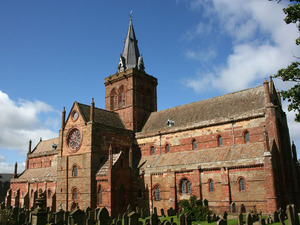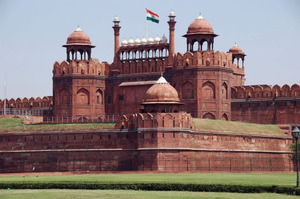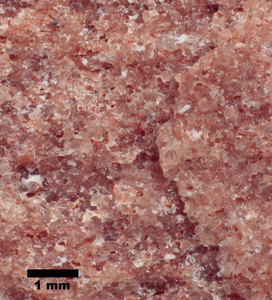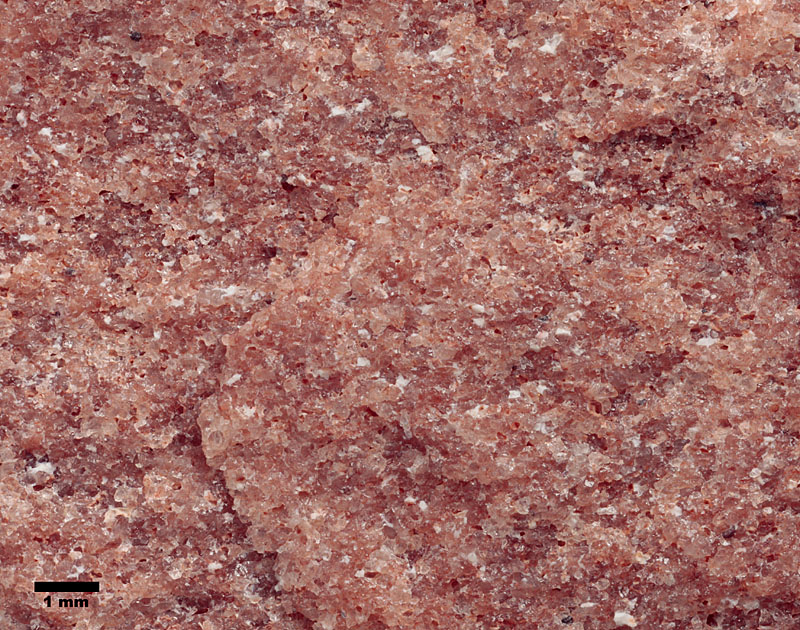 Red sandstones have been quarried as building stones for centuries on all continents except Antarctica. An example in the U.S. is the Smithsonian Castle (left), in Washington D.C., which was constructed from “Seneca Red” sandstone. In the mid-19th century, this sandstone was quarried about twenty miles away along the Potomac River in Maryland. Other famous red sandstones have been quarried in Scotland, India, and many other countries.
Red sandstones have been quarried as building stones for centuries on all continents except Antarctica. An example in the U.S. is the Smithsonian Castle (left), in Washington D.C., which was constructed from “Seneca Red” sandstone. In the mid-19th century, this sandstone was quarried about twenty miles away along the Potomac River in Maryland. Other famous red sandstones have been quarried in Scotland, India, and many other countries.
 Saint Magnus Cathedral (right), in the Orkney Islands, is one of many historic Scottish buildings built from the Old Red Sandstone. This sandstone deposit is famous in the history of both architecture and geology of the British Isles. It was by studying deposits of the Old Red Sandstone that 18th-century naturalist James Hutton first conceived the immense age of the earth.
Saint Magnus Cathedral (right), in the Orkney Islands, is one of many historic Scottish buildings built from the Old Red Sandstone. This sandstone deposit is famous in the history of both architecture and geology of the British Isles. It was by studying deposits of the Old Red Sandstone that 18th-century naturalist James Hutton first conceived the immense age of the earth.
 The famous Red Fort (left), in Delhi, India, was built by Mughal Emporers in the 17th century. Now a UNESCO World Heritage Site, most of the fort was constructed of a red sandstone deposit that is still quarried extensively in Rajasthan.
The famous Red Fort (left), in Delhi, India, was built by Mughal Emporers in the 17th century. Now a UNESCO World Heritage Site, most of the fort was constructed of a red sandstone deposit that is still quarried extensively in Rajasthan.
 What makes these sandstones red?
What makes these sandstones red?
A good explanation is provided in a short article by the Utah Geological Survey. To summarize: red sandstones were originally deposited as more typical light-colored quartz sandstones. However, instead of being deposited in the ocean like many sandstones, these sandstones were deposited on the continent in an arid environment as sand dunes or ephemeral river deposits. The key is that these sands are left exposed for millennia to weathering and atmospheric oxygen, like the red sand deserts of western Australia. Over time, the small quantities of iron-rich minerals in the sand break down and the iron is oxidized into hematite crystals (Fe2O3) that form as very thin paint-like coating on the quartz sand grains. The hematite crystals absorb all light colors except red which they reflect, giving the sandstones their red color.

